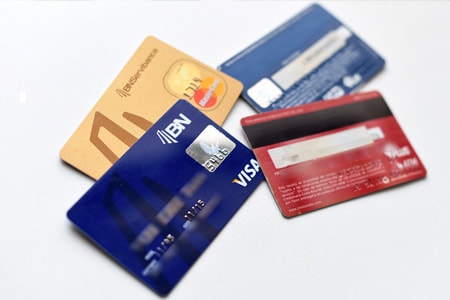Get Free Quote
In the modernized world of today, it is quite common for individuals and families to experience financial ups and downs in life and find themselves in thousands of dollars of debt. It is a fact that the average US household owes $16,061 in credit card debt than any other type of debt (according to an analysis released by personal finance company Ned Wallet). Many people find it difficult to accept the fact that they are thousands of dollars in debt and merely hope that things will eventually get better. Unfortunately, this is not the best strategy when you have excessive debt that is compounded with interest.
However, if you want to eliminate your debt, there are many debt-reduction strategies like debt settlement, debt consolidation, credit counselling and the DIY Debt Management Plan that can help you attain freedom from debt. You too can find a proper solution on how to get out of debt, By Do-It-Yourself Debt Management Plan.
Not every debt solution requires that you work with professionals or a company. You may be able to reduce your debt and take control of your financial health on your own through the DIY approach. However, this needs a lot of motivation, dedication, and planning.

The Do-It-Yourself (DIY) Debt Management Plan
Evaluate Your Debts
The first important step is to know where you stand before you start as the amount of debt you have and the type of debt you have will impact how you should go about paying your debts. You need to collect all your financial reports and make a list of all your debts. You can either do it on a piece of paper or make a list of all your debts on a spreadsheet program like Microsoft Excel or free Google Sheets. Your list should include all your debts including debts like personal loans, credit cards, payday loans, auto loans with their interest rates and monthly payments. At this point, you need not include any loans on your mortgage or student loans, but be sure to add any annual fees you have on your credit cards.

Review Your Monthly Budget
The next step is to review your monthly spending by tracking all your expenses. This should include all your expenses like insurance, student loans, groceries, entertainment, transportation costs, and utilities. This will tell you how much you have remaining to pay down your debt. You should also consider cutting down your expenses so that you can afford to get out of your debts sooner.
Begin Negotiations
After tracking your expenses and setting a budget, you can contact your creditors to convince them that you are facing financial problems and negotiate possible options like reductions in interest rates or converting your debts to repayment plans
Move Forward
There are different ways to go about paying off your debt and moving forward to a debt-free life.
- You can consider transferring your credit card debts to a new one with a lower interest rate or it would be even better if you can qualify for a 0% interest balance transfer card where you have about 18 months interest-free loan
- Debt Stacking or “Avalanche Method”: After calling up your creditors and getting them to lower your amount, you should order your debts from highest to lowest and figure out how much money is left after paying your minimum payments and start paying the debt with the highest interest rate first. After that is paid off move on to the debt with the next highest interest rate. The idea is that it will prevent from racking up interest uncontrollably and save you money.
- Snowball method: In debt stacking, you order your debts from highest to lowest but in the snowball method you do the opposite and instead of highest you start by paying off the lowest debt you owe first and then move up from there. By this method, you will be able to pay a single debt faster and you will be motivated to continue paying off your debts. Both snowball, as well as debt stacking, works if you make the least minimum payments on all your credit cards while paying off one debt at a time.
- Signature loans: Do you know that you can get a loan by just using your signature? It is true. You can access all sorts of credit from credit cards to 5-year loans by just signing an application. It is also known as a character loan or a good faith loan offered by banks and other financial companies. It is a type of unsecured loan and different from collateralized loans. In a collateralized loan, you put up some asset as insurance, whereas in a signature loan your loan is backed only on your income and good credit history. That is why signature loans come with high-interest rates. It could help small businesses, but it could be very difficult to obtain one to consolidate your debts.
- Peer to peer loans: This is a new kind of signature loan which has lower interest rates than a typical no-collateral loan. Peer loans are not issued by banks but are completely run through the internet. They can afford to offer lower interest rates because they do not have to pay for tellers or bank vaults.
Do It Yourself method requires that you provide your creditors with evidence of financial hardship in order to negotiate with them. Some creditors may not be obliged to negotiate with you. So, it requires a lot of patience, strong will, and the right temperament to conduct difficult time-consuming negotiations and follow this approach to completion.
If you need help to understand the best strategy on how to pay off debt, call our Credit Counselling Specialists on Toll-Free No 888 888 9914 for a free debt evaluation today.

